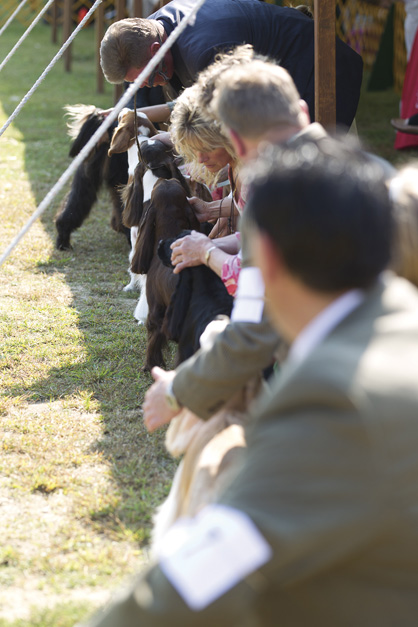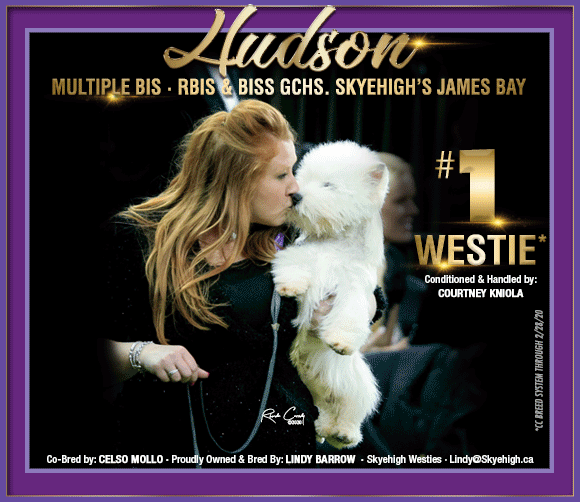Logic 101 and Breed Varieties
From the archives of The Canine Chronicle, November, 1991
by Herman L. Felton
Shortly after I had settled into my aisle seat on the flight from Atlanta to Portland, this fortyish man in a rather rumpled tweedy suit stopped and informed me that he had the window seat. I got up and let him in. Almost immediately he told me that he had spent several days in Atlanta and was now enroute to Oregon to attend another conference there. Then he asked if I was on my way home to Portland.
“Uh, oh,” I thought, “a talker”. Aloud, I told him that I was going there to judge some dog shows. The ensuing excitement in his voice and the fact that he did not open his hard-backed book gave me the sinking feeling that I had made a tactical error; I had volunteered information and given ammunition to a non-stop converser at the beginning of a four hour flight and I was in for it.
But I was wrong in my misgivings. We had a constructive conversation for about an hour before they served a meal. After that, he opened his book and I dozed off. It was an interesting hour and his observations, those of an intelligent and objective outsider to the dog show scene, were pertinent and, as they served to reinforce my own opinions, highly credible. They constituted an infusion of support for some of my long held views.
I learned that he is on the faculty, in the Philosophy Department, of a well-known and highly regarded eastern university. His name is Aristotle Kant. Among other courses, he teaches Logic 101 and has a strong background in Biology. He had, with a former girlfriend who did some breeding and exhibiting, attended a number of dog shows, and had watched the Westminster show on television. His specialty was Deductive Logic, particularly the mechanism of valid inference.
He had some questions–make that many questions.
First, we agreed that, biologically speaking, all domesticated dogs are one species (Canis familiaris) and that, biologically again, a variety consists of a group having characteristics of its own within a species, and is a subdivision of a species, or a subspecies.
However, the AKC is not biologically oriented. It leans more toward animal (in this case dog) husbandry. It proclaims: “The following breeds and/or varieties of breeds, divided by groups, shall be all the breeds and/or varieties of breeds for which regular classes of the AKC may be provided at any show…” It lists all the breeds that it recognizes. And in several of these it indicates that two or three varieties are recognized. It divides the breeds (with the corresponding varieties of breeds) into serval groups. It also reserves the option for its Board of Directors to add to, transfer from one group to another, or delete from the list of breeds and/or varieties of breeds whenever, in the opinion of the Board, “registrations of such breed and/or variety of breed in the Stud Book justify such action.”
(Does this last rather vague and ambiguous statement mandate that the designation of breed varieties correlates in some quantitative or qualitative manner with the registration numbers? Or is it some legalese needed to conform to the Charter? “Curiouser and curiouser”, I said, and Dr. Kant agreed.)
Accordingly, AKC presently designates 7 groups – by number and by name. I reeled these off to Aristotle Kant and showed him a premium list and he appeared to accept this division as relatively logical, but… He wanted to know what on earth Non-Sporting meant; why is the Pug in the Toy group while the frequently smaller Boson Terrier is in the Non-Sporting group; why are the Norwegian Elkhound and the Keeshond in different groups; didn’t the Samoyed do considerable herding; ditto the Rottweiler?
I told him that in 1982 the AKC had established a committee (consisting of Annie Clark, Dona Hausman, John Marvin, Council Parker and Lang Skarda, with me as chairperson and Terry Stacy as staff representative) to study this subject but that our first report had been shot down because it upset too many long established “unfair advantages” and because it was rather ineptly handled–politically–in the face of very strong opposition by those who would be adversely affected.
I approached the matter of “variations of breeds” with some trepidation given the sharp, logical mind and increasingly tart tongue of Aristotle Kant who appeared to have become more and more impatient with the foibles of AKC dog show procedures. Why, he wanted to know, did the Cocker Spaniels have three representatives in the Group (and the triple chances to earn championship points in the classes) and the Bull Terriers two representatives, based solely on color, while other breeds which have color divisions (Dobermans, Dalmatians, Great Danes) have only one representative? Why do Chihuahuas and Collies have two representatives each in their groups, based on coat length or texture, whereas Brussels Griffons, Saint Bernards and Chows, for example, have only one?
I gave him some other examples. He gave me a bemused answer that was the philosophical equivalent of “it sure doesn’t compute.”
Along about then they started serving the meal and our conversation ended.
Afterward, I thought of saying something more but I was tired and didn’t want to restart the conversation. Besides, he appeared to be engrossed in his book. It was to this effect; One could postulate, in accord with that old saw, “If it ain’t broke, don’t fix it.” Conversely, I would prefer to say, and Prof. Kant would undoubtedly agree, “If it can be improved, improve it.”
My previous dissertations on judges and judging, the AKC management structure and the trend of the AKC toward greater involvement in the overall relationship of dogs to present day society were not intended to have a roiling or disruptive effect. The purpose was positive and constructive – as recognized by all but one of those who were kind enough or sufficiently interested to voice or write about their opinions.
Short URL: http://caninechronicle.com/?p=184363
Comments are closed














